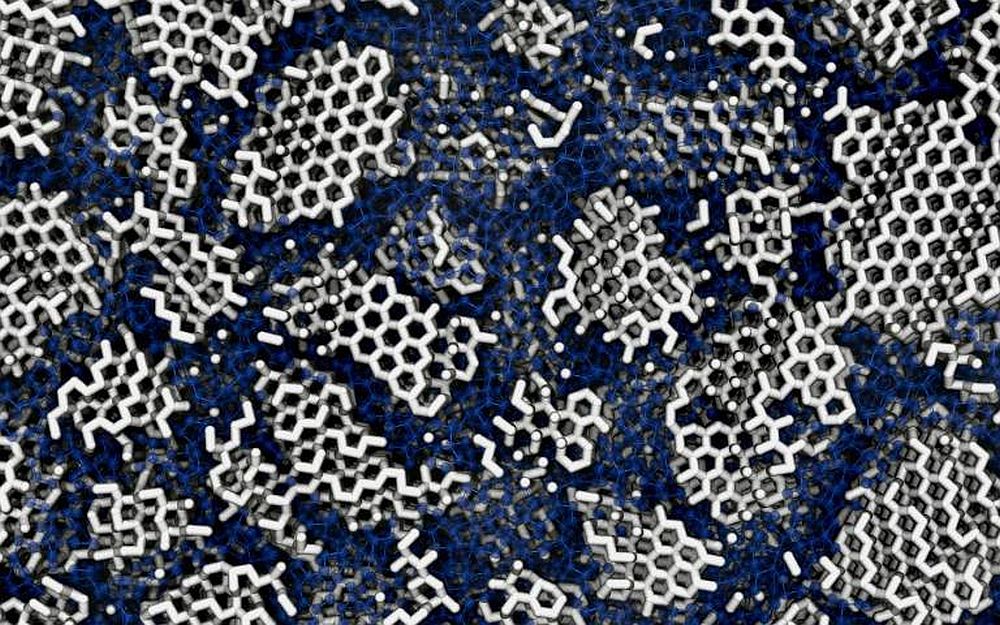
[Image above] An Airbus A320neo, which contains a ceramic matrix composite turbine shroud in its engines. Research on developing new environmental barrier coatings to protect these composite shrouds from undesirable reactions is an active area of study. Credit: Dirk-Jan Kraan, Flickr (CC BY-NC 2.0)
In the last couple decades, significant investment by GE Aviation in ceramic matrix composite (CMC) development and maturation has led to commercial introduction of CMC components into jet engines. However, CMCs themselves are not the only development that allowed for successful deployment—development of environmental barrier coatings (EBCs) was also crucial to this launch.
EBCs are a protective measure that enable CMC operation under harsh conditions. In the 1990s, researchers discovered that the protective silica layer on CMCs reacts with water vapor in combustion environments to form volatile products such as Si(OH)4. Over time, the CMC surface recedes, the component thins, and its mechanical properties degrade.
When this detrimental reaction was discovered, NASA joined with GE and Pratt & Whitney to develop new coatings to protect CMCs from water vapor. These new coatings were subsequently termed environmental barrier coatings, and in the years since, several iterations of EBCs were explored to identify a material system that would effectively protect CMCs.
Ytterbium-based silicates are a current generation of EBC materials that demonstrate much promise due to their high temperature stability and low steam volatility capabilities. Ytterbium disilicate and ytterbium monosilicate specifically are being studied due to their stability at temperatures below 1,750°C and higher damage tolerance behaviors compared to other rare earth silicates.
Thermochemical and thermomechanical stability of both ytterbium disilicate and ytterbium monosilicate in aerospace engine working environments are extensively reported. However, most of the studies were conducted on coatings processed using plasma spray techniques that result in complex coating microstructures.
“Therefore, there is a lack of fundamental studies in the literature about the structural stability of these materials under long-term thermal exposure at high operating temperatures,” researchers write in a recent paper.
Postgraduate researcher Ahmet Hilmi Paksoy and professor Ping Xiao of the University of Manchester are authors of the recent paper. They looked to examine the effect of thermal ageing on microstructural characteristics and elastic properties of as-sintered ytterbium disilicate, ytterbium monosilicate, and ytterbium disilicate/monosilicate composites.
Commercially available ytterbium disilicate and ytterbium monosilicate powders (Treibacher Industrie AG) were used to create the silicates. The dried powders were uniaxially pressed into small cylindrical specimens that were sintered in air at 1,450°C for 20 hours. The thermal ageing study was then conducted on as-sintered compacts at 1,350°C, with an increasing dwell time from 10 hours to 1,000 hours for the ytterbium disilicate and ytterbium monosilicate samples and at 10 hours and 110 hours for the ytterbium disilicate/monosilicate composites.
Based on experiments, Paksoy and Xiao drew several conclusions about the behavior of these ytterbium silicates, including
- Microstructure characteristics: Thermal ageing at 1,350°C resulted in significant increase of grain size and relative density for the ytterbium disilicate. However, ytterbium monosilicate did not exhibit an apparent change in microstructure characteristics and showed insignificant grain growth, implying higher structural stability of this silicate.
- Elastic properties: The change in elastic properties as a function of thermal ageing time followed a similar trend as the microstructural characteristics. Ytterbium disilicate experienced a high degree of densification, resulting in an about 10% increase of Young’s modulus up to 110 hours of heat treatment, while neither the elastic properties nor the density of ytterbium monosilicate changed in this same period.
- Behavior of ytterbium silicate composites: Sintering behavior of the ytterbium disilicate/monosilicate composites showed that addition of ytterbium monosilicate impeded the grain growth rates and contributed to stabilization of the elastic properties. Plus, a crack healing phenomenon was observed in the composite with 22 wt.% ytterbium monosilicate due to microthermal stress-promoted diffusion on crack surfaces and grain boundaries.
“The findings of this study do not only lay the groundwork for high temperature stability of [ytterbium] based silicates for the design and application of EBCs, but also demonstrates that [ytterbium disilicate/monosilicate] composites could be a prospective material system to heal the cracks and increase the lifetime of EBCs,” the researchers conclude.
The paper, published in Ceramics International, is “Study on sintering behaviour of ytterbium disilicate and ytterbium monosilicate for environmental barrier coating applications” (DOI: 10.1016/j.ceramint.2021.12.344).
Author
Lisa McDonald
CTT Categories
- Aeronautics & Space


